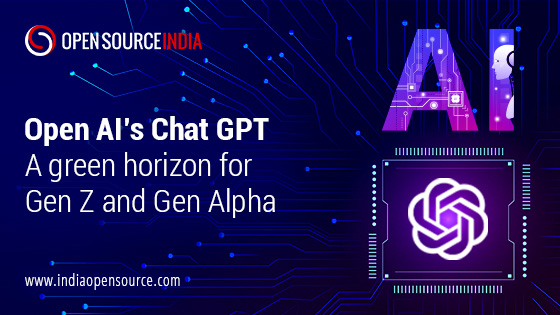Throughout the years, the world has been focusing on the prospects of AI, machine learning, and many other technologies, but now the destined future stone has arrived, poised to change the face of literature and art.
Open AI, known for its Dall-E-dominated social media feeds, is back with Chat GPT, a chatbot developed using GPT-3 technology.
So what is GPT-3 and how is it used to make Chat GPT?
Developed by Open AI, the GPT-3 (Generative Pretrained Transformer 3) language processing AI model is state-of-the-art. A wide range of applications can be generated using it, including translating, modelling languages, and creating text for chatbots. One of the most powerful and largest language processing AI models to date, with 175 billion parameters.
As a simplified explanation, GPT-3 allows users to give trained AIs a variety of worded prompts. These can include questions, requests for writing on a specific topic of your choice, and many other things.
Capabilities of GPT – 3
Chat GPT-3 gives a pretty wide range of abilities, everything from writing poems about cliche rom-coms to explaining about quantum mechanics in simple terms and even writing full-fledged research papers and articles.
Where we could spend hours researching, understanding, and then writing about an article on quantum mechanics, Chat GPT can produce a well-written alternative in seconds.
There are some setbacks and pitfalls if the software is confused, your prompts become too complicated, or you get into technicalities.
The small catch is that the events of the previous year will be met with limited knowledge, and the model may occasionally produce false or confusing information.
Working model of Open AI’s Chat GPT-3
Let me provide an example:
– The group enters a sentence such as “What colour is the wood of a tree?”
Now, the system responds to the question; if the answer is incorrect, the team enters the correct answer into the system, teaching it correct answers and assisting it in building its knowledge.
It then goes through a similar stage where it offers multiple answers and a team member ranks them from best to worst, training the model on comparisons.
Think of it as a very beefed up, much smarter version of autocomplete software.
Are there any other AI language generators?
Another AI language generator that made headlines on the internet is Google’s LaMDA. But saying this, there is also plenty of this software out there, created by everyone from Microsoft to Amazon and Stanford University.
Most of these models are not available to the public, but OpenAI has begun opening up access to GPT-3 during its test process.
Artificial intelligence and human intelligence are now both under the same roof, standing with each other and standing against each other. Now the novices of Gen Z and Gen Alpha will mold the batter to stand ahead of the AI clock.












